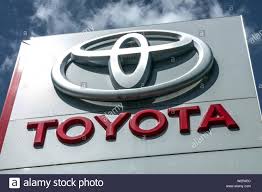
Its first commercial hydrogen fuel pump site in the Australian state of Victoria was opened by the Japanese auto maker Toyota Motor Corp on Monday as the firm urged the Australian government to help in the rollout of more such sites so that there is greater acceptance of cleaner fuel cars by consumers of the country
The auto company will launch 20 of the Mirai hydrogen fuel cell cars in the Australian market this April and will place them in fleets to get feedback on how they run. The hydrogen fuel pump site that was opened in the west of Melbourne is also the largest such site of the company globally in terms of production, storage and dispensation of hydrogen.
Last week, a similar such fuel station, the first in Australia, which has been developed and launched by ActewAGL, started selling hydrogen produced by France's Neoen in a trial phase wherein the fuel is being used in 20 Hyundai Nexo sport utility vehicles that are owned and run by the Australian Capital Territory government.
Globally however the demand for fuel cell vehicles has remained small because of concerns over a shortage of fuelling stations, lower resale values and the threat of explosion of the highly explosive hydrogen gas.
About 10,000 Mirai vehicles have so far been sold by Toyota primarily in its home market of Japan and the United States.
"Here in Australia, refuelling infrastructure has been the biggest challenge, and still is, to introducing pioneering vehicles like the Mirai. So this is an important step forward to rectifying that," said Matthew MacLeod, Toyota Australia's manager of future technologies and mobility.
The shift from fossil fuels to cleaner energy vehicles has been slow in Australia for reduction of carbon emissions in the transport segment of the country as the country has not set any targets for emission reduction and does not offer any subsidies for cleaner vehicles - even for hybrid or battery electric vehicles. That is in sharp contrast to the policies created and implemented by other rich countries.
Despite that, the Australian government has predicted that by 2030, about 26 per cent of all new vehicle sale will comprise of electric vehicles from the current market share of 1 per cent.
Hydrogen is produced at the site of Toyota by the process of electrolysis of water which splits hydrogen and oxygen. The site uses rooftop solar panels to power an electrolyser for electrolysis. The site has the capacity to produce 80 kilograms a day of hydrogen for the fuel pump.
Almost half of the funds for the A$7.4 million ($5.7 million) project has been provided by the Australian Renewable Energy Agency.
(Source:www.usnews.com)
The auto company will launch 20 of the Mirai hydrogen fuel cell cars in the Australian market this April and will place them in fleets to get feedback on how they run. The hydrogen fuel pump site that was opened in the west of Melbourne is also the largest such site of the company globally in terms of production, storage and dispensation of hydrogen.
Last week, a similar such fuel station, the first in Australia, which has been developed and launched by ActewAGL, started selling hydrogen produced by France's Neoen in a trial phase wherein the fuel is being used in 20 Hyundai Nexo sport utility vehicles that are owned and run by the Australian Capital Territory government.
Globally however the demand for fuel cell vehicles has remained small because of concerns over a shortage of fuelling stations, lower resale values and the threat of explosion of the highly explosive hydrogen gas.
About 10,000 Mirai vehicles have so far been sold by Toyota primarily in its home market of Japan and the United States.
"Here in Australia, refuelling infrastructure has been the biggest challenge, and still is, to introducing pioneering vehicles like the Mirai. So this is an important step forward to rectifying that," said Matthew MacLeod, Toyota Australia's manager of future technologies and mobility.
The shift from fossil fuels to cleaner energy vehicles has been slow in Australia for reduction of carbon emissions in the transport segment of the country as the country has not set any targets for emission reduction and does not offer any subsidies for cleaner vehicles - even for hybrid or battery electric vehicles. That is in sharp contrast to the policies created and implemented by other rich countries.
Despite that, the Australian government has predicted that by 2030, about 26 per cent of all new vehicle sale will comprise of electric vehicles from the current market share of 1 per cent.
Hydrogen is produced at the site of Toyota by the process of electrolysis of water which splits hydrogen and oxygen. The site uses rooftop solar panels to power an electrolyser for electrolysis. The site has the capacity to produce 80 kilograms a day of hydrogen for the fuel pump.
Almost half of the funds for the A$7.4 million ($5.7 million) project has been provided by the Australian Renewable Energy Agency.
(Source:www.usnews.com)





